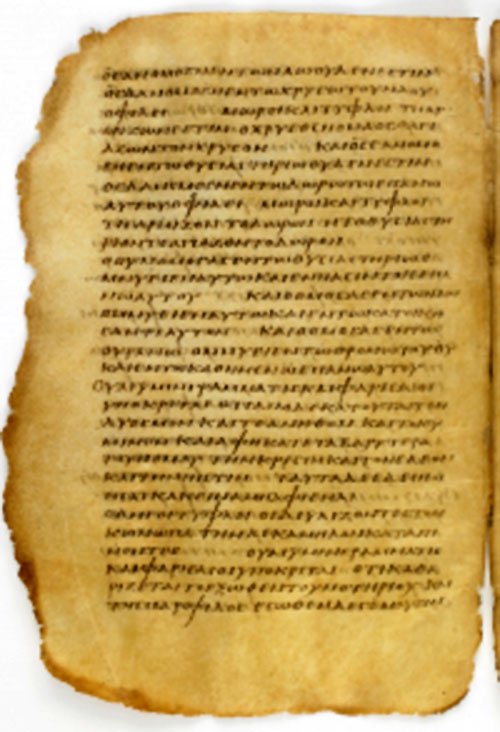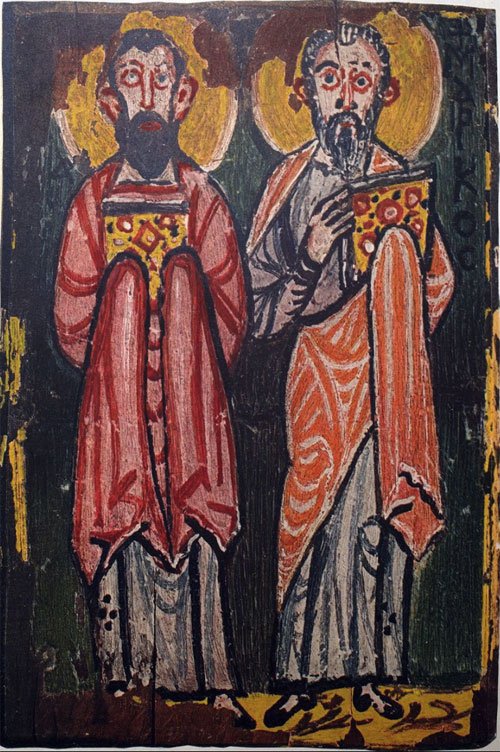Return to: Ancient Biblical Manuscripts
Codex Washingtonianus, the Third Earliest Manuscript of the Four Gospels and One of the Earliest Codices Preserved in the Western Hemisphere

The Codex Washingtonianus or Codex Washingtonensis, also called the Washington Manuscript of the Gospels and The Freer Gospels, dating from the fourth or fifth century CE, is the third earliest surviving manuscript of the four biblical gospels in Greek, and one of the earliest codices preserved in North America. It consists of 187 leaves written in Koine Greek in a single column, 30 lines per column, and is also the only ancient codex of the Greek gospels for which at least a partial provenance is known. The codex also has two very distinctive painted wooden covers, encaustic on panels, probably dating from the seventh century, with portraits of the Four Evangelists. The covers are presently separated from the codex.

The codex was purchased by industrialist and art collector Charles Lang Freer “from an Arab dealer named Ali in Giza (Gizah), near Cairo, on December 19th 1906…. The only hint as to origin or former owner… is the prayer for a certain Timothy in the subscription to Mark, p. 372 in the Facsimile. This may be connected with the Church of Timothy in the Monastery of the Vinedresser, which was located near the third pyramid (Abu Salih’s Churches and Monasteries of Egypt, trans. by Evertts and Butler, p. 190)….” (Sanders, The New Testament Manuscripts in the Freer Collection [1918] 1-2).
The manuscript is preserved in the Freer Gallery, Sackler Museum, Smithsonian Institution, Washington, D.C. In 1912 Henry A Sanders edited Facsimile of the Washington Manuscript of the Four Gospels in the Freer Collection. This color facsimile was published in an edition limited to 435 copies by the University of Michigan in Ann Arbor.
In 2020 digital facsimiles the complete manuscript were available from The Center for the Study of New Testament Manuscripts.
Return to: Ancient Biblical Manuscripts
